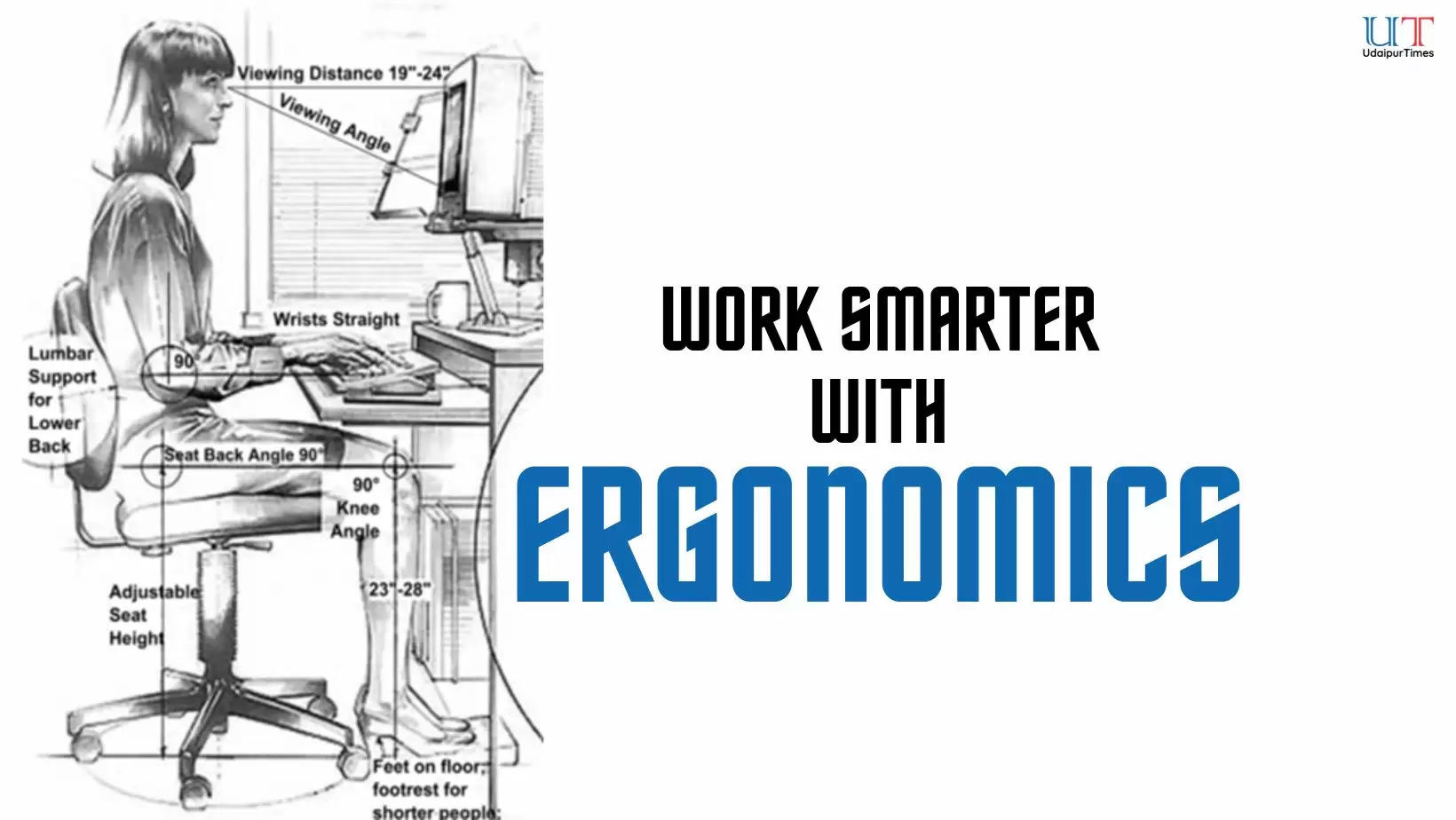Work Smarter not Harder with Ergonomics
by: Bipasha Bhowmick (PhD Scholar)
Do you ever find yourself slouching at your desk, feeling uncomfortable after a long day's work? Or maybe your back hurts after spending hours hunched over your phone or laptop? You're not alone. Many of us experience discomfort and even pain due to poor ergonomics in our daily activities. But fear not! In this article, we'll delve into the world of ergonomics and discover simple solutions to make your everyday life more comfortable and healthier.
What is Ergonomics?
Let's start with the basics. Ergonomics is all about designing our environment to fit us ie the Worker, rather than forcing our bodies to fit the environment. It's about finding the best possible match between people, the things they do, the objects they use, and the environments they work and play in.
Ergonomics often gets confused with other similar-sounding terms like economics or agronomics. However, they are distinct fields of study. Economics deals with the production, distribution, and consumption of goods and services, while agronomics focuses on agricultural science and practices. Ergonomics, on the other hand, is concerned with optimizing human performance and well-being in various settings.
|
The term "ergonomics" was first coined by Polish scientist and scholar Professor Wojciech Jastrzębowski in 1857. He combined the Greek words "ergon," meaning work, and "nomos," meaning laws, to create the word "ergonomics" or the "laws of work." However, it wasn't until the mid-20th century that ergonomics gained widespread recognition as a field of study, particularly during World War II when the design of aircraft cockpits and military equipment highlighted the importance of human factors in design.
Why Does Ergonomics Matter?
Good question! Proper ergonomics can have a big impact on our health and well-being. When we sit, stand, or move in ways that are not ergonomic, we put strain on our muscles and joints, leading to discomfort, fatigue, and even injury over time. This can result in a range of musculoskeletal disorders (MSDs) such as carpal tunnel syndrome, tendonitis, frozen shoulders, radial tunnel syndrome and lower back pain. By practicing good ergonomics, we can reduce the risk of these problems, increase productivity, and enhance overall comfort and happiness.
Ergonomics at Work:
Let's focus on one of the most common places where ergonomics comes into play: the computer workstation. Whether you work in an office, a factory, or anywhere else, there are simple steps you can take to improve your ergonomics and feel better throughout the day.
- Proper Seating: Choose a chair that provides good support for your back, with adjustable height and lumbar support if possible. Keep your feet flat on the floor and your knees at hip level.
- Monitor Position: Position your computer monitor at eye level, about an arm's length away from your face. This helps reduce strain on your neck and eyes.
- Keyboard and Mouse: Keep your keyboard and mouse close to your body, with your elbows at a 90-degree angle. This can help prevent wrist and shoulder pain.
- Take Breaks: Remember to take regular breaks to stretch and move around. Sitting for long periods can be hard on your body, so give yourself time to rest and recharge.
- Rule 20-20-20: The rule suggests that every 20 minutes, you should look at something 20 feet away, for at least 20 seconds.
So to conclude, ergonomics is all about finding harmony between our bodies and our environment. By paying attention to how we sit, stand, and move throughout the day, we can reduce discomfort, prevent injury, and improve our overall quality of life. So why wait? Start practicing good ergonomics today and feel the difference for yourself!
Remember, these are just a few simple tips to get you started. There's a whole world of ergonomic solutions out there waiting to be discovered. So go ahead, explore, experiment, and find what works best for you. It’s rightly said-Work Smarter not harder! Your body will thank you!
To join us on Facebook Click Here and Subscribe to UdaipurTimes Broadcast channels on GoogleNews | Telegram | Signal



